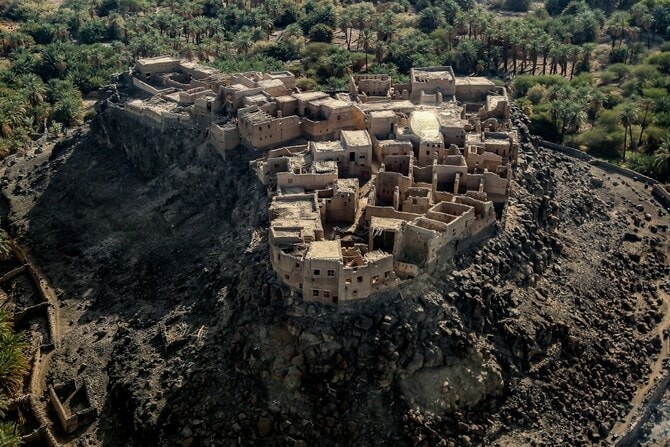Archaeologists say they have discovered a 4,000-year-old fortified city hidden under an oasis in Saudi Arabia, which could shed light on the change in life from nomadic to urban living.

According to the study, led by French archaeologist Guillaume Charloux and published recently in the journal PLOS One, the remains of a city called al-Natah, long hidden by the walled oasis of Khaybar. The oasis is a green, fertile area surrounded by desert in the northwest of the Arabian Peninsula. At the archaeological site, researchers discovered an ancient wall that was 14.5 kilometers long.
A team of French and Saudi researchers has provided evidence that these ramparts were built around a settlement. The city, believed to have had a population of 500, was built around 2,400 BC during the early Bronze Age. The city was abandoned about 1,000 years later, but no one knows why.
al-Natah was built when cities were flourishing in the Levant region along the Mediterranean from modern-day Syria to Jordan. At that time, northwestern Saudi Arabia was considered a barren desert, crossed only by nomadic herders and a few cemeteries.
It was not until 15 years ago that archaeologists discovered Bronze Age fortifications in the Tayma Oasis, north of Khaybar. These discoveries prompted scientists to study the oases in greater detail.
The black volcanic rock called basalt that covered the walls of al-Natah was so dense that it protected the site from being excavated, Charloux said. Scientists have found foundations strong enough to support at least one- or two-story houses, but they will need to study them more closely.
These initial findings paint a picture of a 2.6-hectare city with about 50 houses located on a hill, surrounded by walls.
Graves within a cemetery here contain metal weapons such as axes and daggers as well as stones such as agate, suggesting a relatively advanced society for the time. While pottery remains suggest a relatively egalitarian society. The size of the ramparts, which can reach up to 5 m in height, suggests that al-Natah was the site of a strong local government.
These findings reveal a slow process of urbanization in the transition from nomadic to more settled village life.